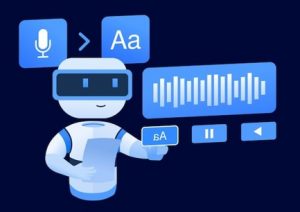In a revolutionary move towards global communication, the tech giant Meta has unveiled its latest AI model, named SeamlessM4T. This all-in-one multilingual multimodal translation and transcription model is set to redefine language barriers, making cross-lingual conversations a seamless reality. With the power to perform real-time translations and transcriptions in up to 100 languages, the implications for worldwide communication are truly profound.
Also Read: Meta Unveils AudioCraft: An AI Tool to Turn Text into Audio and Music

Meta’s Multifaceted Translation Marvel
Meta’s SeamlessM4T introduces a new era of communication by offering a wide range of translation and transcription functionalities. This singular model is equipped to handle speech-to-text, speech-to-speech, text-to-speech, and text-to-text translations, bridging the language gap across various forms of communication.
Also Read: Improving the Performance of Multi-lingual Translation Models
A Diverse Spectrum of Capabilities
The capabilities of SeamlessM4T are nothing short of extraordinary, as it supports an impressive array of translation tasks for nearly 100 languages. These functionalities include:
- Speech Recognition: Seamlessly recognizing speech in almost 100 languages.
- Speech-to-Text Translation: Converting spoken words into text and vice versa, encompassing nearly 100 input and output languages.
- Speech-to-Speech Translation: Enabling speech translation for around 100 input languages and 36 output languages, including English.
- Text-to-Text Translation: Facilitating text translation for almost 100 languages.
- Text-to-Speech Translation: Converting text into speech for approximately 100 input languages and 35 output languages.

Efficiency Redefined: A Singular Solution
Unlike traditional approaches that involve separate models for distinct tasks, SeamlessM4T operates on a unified system. This innovative approach significantly reduces errors and delays, enhancing the overall efficiency and quality of translations. As a result, people speaking different languages can now communicate effectively without the hindrance of language barriers.
Meta’s Take on Open Source and Collaboration
Meta has consistently championed open-sourcing of models, and SeamlessM4T is no exception. The company has released the SeamlessM4T AI model under a research license, encouraging researchers & developers to build upon this innovation. Moreover, Meta has generously shared the metadata of SeamlessAlign, a monumental multimodal translation dataset comprising a staggering 270,000 hours of speech and text alignments.
Also Read: Meta Open-Sources All their Promising Projects | Find Out Why

Behind the Scenes of Creation
To bring SeamlessM4T to life, Meta utilized scraped text and speech data to develop the training dataset named SeamlessAlign. Researchers meticulously aligned 443,000 hours of speech with corresponding texts, producing 29,000 hours of “speech-to-speech” alignments. This process imbued SeamlessM4T with the ability to transcribe speech to text, translate text, generate speech from text, and even translate spoken words between languages.
Also Read: Meta Open-Sources AI Model Trained on Text, Image & Audio Simultaneously
Building on a Legacy of Innovation
SeamlessM4T marks the culmination of Meta’s relentless pursuit of creating a universal translator. The company recently released the No Language Left Behind (NLLB) model, a text-to-text translation model supporting a staggering 200 languages. This model has been seamlessly integrated into Wikipedia as one of its trusted translation providers. Moreover, Meta unveiled the Universal Speech Translator, which achieved the remarkable feat of direct speech-to-speech translation for Hokkien, a language without a widely adopted writing system. Adding to its achievements, Meta introduced Massively Multilingual Speech, a technology catering to speech recognition, language identification, and speech synthesis across over 1,100 languages.

A Landscape of Innovation in Communication Technologies
Meta is not alone in its pursuit of advancing language translation and communication technologies. Tech giants like Amazon, Microsoft, and OpenAI, alongside various startups, have already introduced a range of commercial services and open-source models. Google, for instance, is working on the Universal Speech Model, an integral part of its broader initiative to comprehend the world’s 1,000 most spoken languages. Mozilla has also taken strides in this domain, spearheading Common Voice, a colossal collection of voices in multiple languages for training automatic speech recognition algorithms.
Also Read: Introducing AudioPaLM: Google’s Breakthrough in Language Models
A Glimpse into the Future of Meta AI
CEO Mark Zuckerberg has unveiled ambitious plans to integrate these AI models seamlessly across various Meta platforms, including Facebook, Instagram, WhatsApp, Messenger, and Threads. With these innovations, Meta envisions a future where language barriers cease to exist, fostering genuine global connections and understanding.

Our Say
Meta’s ‘SeamlessM4T’ AI model is poised to reshape the communication landscape, breaking down language barriers and fostering global connections. As technology continues to evolve, the potential for meaningful interactions transcends linguistic boundaries, marking a new chapter in the history of human communication.




